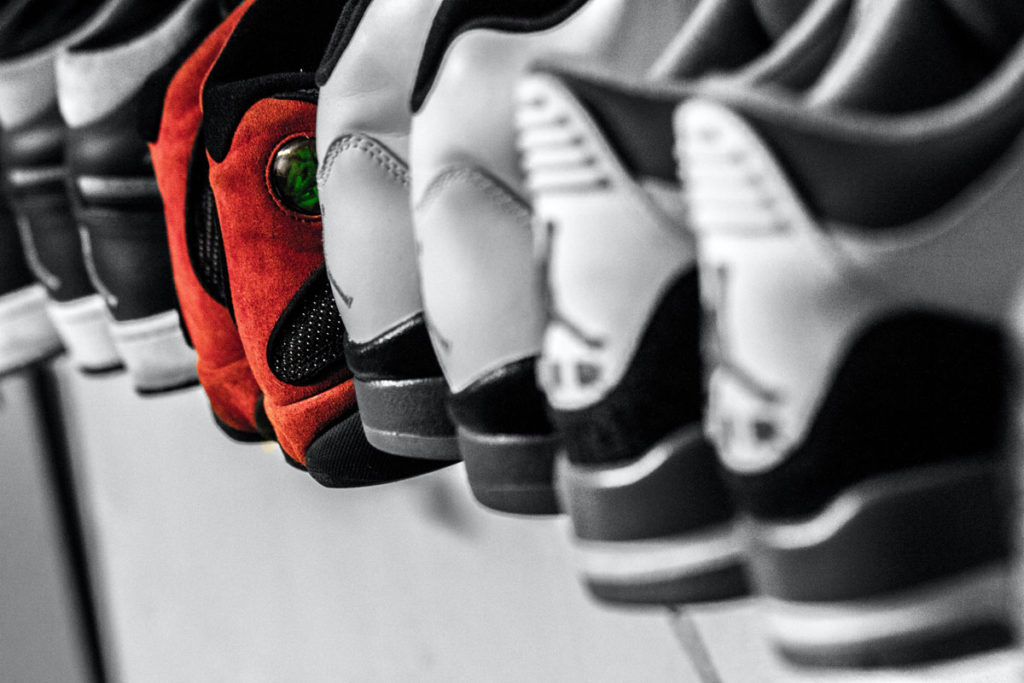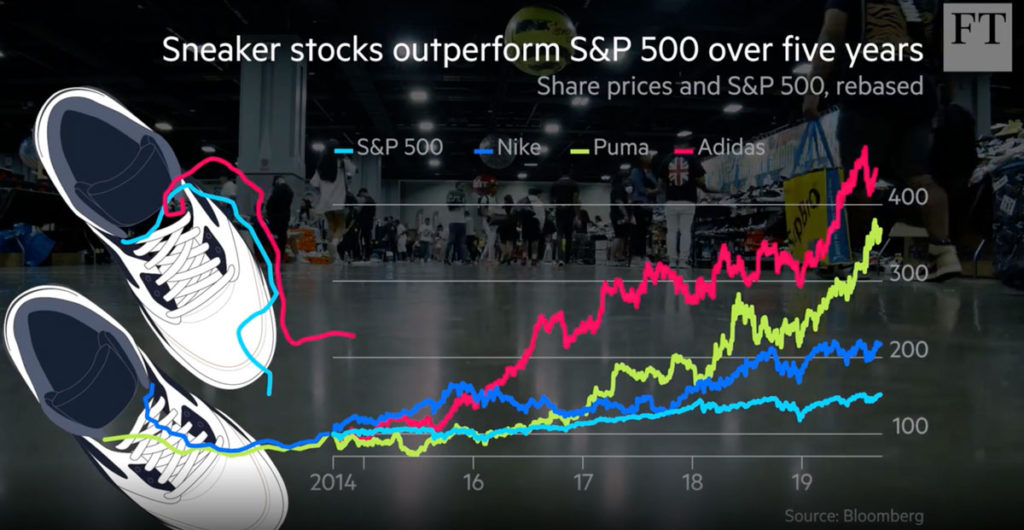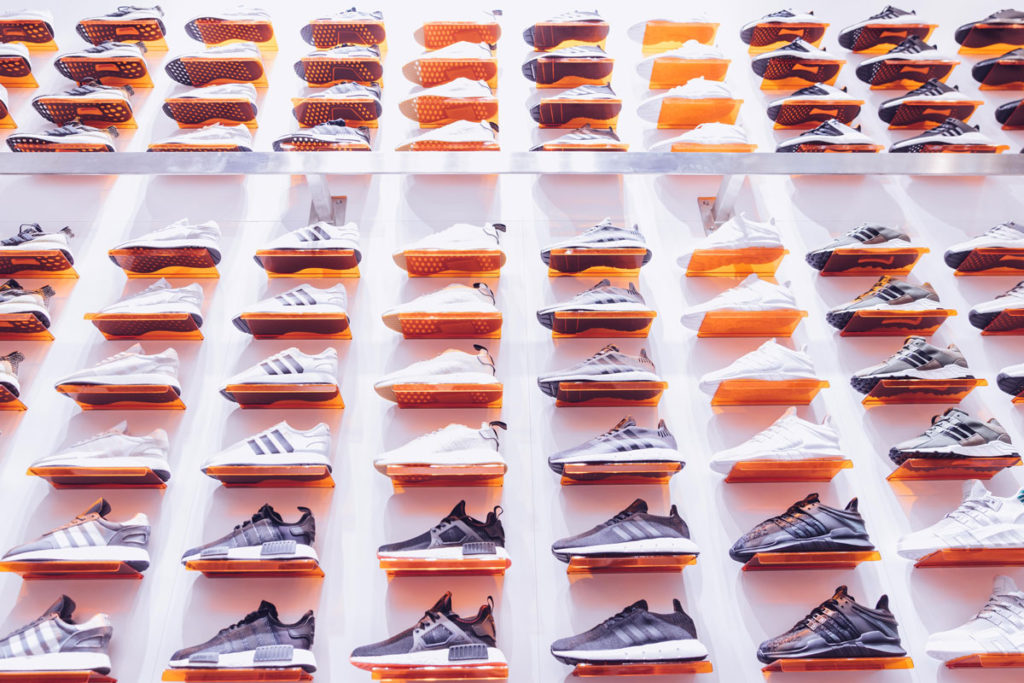Reselling has become a modern stock exchange.
Within the last few years, the resell market has blown up. The growing influence of streetwear and the ever-evolving movement in fashion has allowed this secondary market of buying and selling sneakers to become a major business opportunity for many.
In fact, according to an analysis done by Cowen & Co., the sneaker reselling market is projected to become a $6 billion dollar business globally by 2025. With so many people jumping into this market, it’s difficult not to wonder why and how this all came to be. But, before diving into that, it’s first important to understand what it actually is (for anyone unfamiliar).
Understanding Resale and the Culture Behind It
Simply put, reselling is having a product that is in high demand on a market (either due to rarity or limited availability) and resold in mark up to other consumers. Following the rise of the streetwear and sneaker culture, with brands like Supreme creating a huge demand for limited-edition items, reselling has become a huge playing field for hype product acquisition. With so many people chasing these items as commodities and the advent of bots buying up rare items in the blink of an eye, acquiring a highly-popular in-demand sneaker is almost impossible in the modern-day.
Beyond making a few hundred (or even thousand) bucks, there are some deeper cultural implications behind the reselling culture. While there are a lot of people in the game, buying and selling as a business, a large part of why reselling has taken off has come from the desire to belong.

For many younger consumers, being part of a much larger community is what makes acquiring these items for such high prices so important. Wearing or having the latest and greatest brands, from Yeezy, Off-White, or Supreme allows these impressionable consumers to feel like they are part of a select social group, wearing these clothes and shoes as a sort of badge of honor. With the psychological notion of belongingness at play, consumers display these brands as if saying “I belong here.”
The Rise of Resell
Before the advent of the Internet, sneakers were nothing more than footwear for show. While the business of reselling may have existed, the market to buy and sell was simply not as developed as it is now.
Fast forward to the late ‘90s, with platforms like eBay having emerged, sneakerheads had gained access to a go-to platform to sell their existing sneakers, while also finding other hot products around. Eventually, as the years passed, other sites like ISS (which would eventually become Sole Collector) and NikeTalk popped up, serving as both a marketplace and community for sneakerheads to exchange their goods.

By 2005, the highly popular site, Flight Club open its doors, being one of the first online marketplaces that pushed an omnichannel approach of running an online and offline store. Businesses like Flight Club gave resellers and collectors a place to legitimately buy and sell authentic sneakers. With this, many popular sites like Sneaker News or Hypebeast entered the foray, further propelling and spreading the news of sneakers.
“It was a lot of having to dig. There was a lot of discovery, compared to now. I don’t even know how people got money across back in those days before PayPal. It wasn’t until that when sneaker reselling really expanded.”
Yu-Ming Wu, founder of Sneaker News and Sneaker Con
As the old ways of buying and selling on eBay, Craigslist, and other forums began to die down due to their lack of security, sites like Novelship, GOAT, and StockX arose, giving way for safe, secure transactions.
It wasn’t until the StockX – the reselling platform that acts as more of a stock exchange for sneakers – was valued at $1 billion USD that people began to take notice at the real potential of this business model and market.
Sneaker Resale’s Projected Growth
Since the iconic Air Jordan 1 came out as forbidden fruit in 1985, sneakers have become more than just footwear, but a commodity of high demand. As mentioned earlier, the sneaker reselling market is set on being a $6 billion dollar business by 2025. To add to that, based on research done by Grand View Research Inc. the global athletic footwear market size is expected to reach $95.14 billion by the same year. This is evident that there is a lot of money to be made in this market.

With a lot of the sales coming from celebrity influence, as young consumers look to their favorite stars to see what’s hot and not, tons of people are flocking to this market with hopes to make bank. Not only is this profitable for both the minor players involved, but it has also helped major brands like Nike and Adidas see some gains.
While these brands may not profit directly from having their items sold at much higher than retail price, the resell market does generate more buzz for their products. Furthermore, how ‘hot’ an item is within the resell market alone gives these brands enough data and information to identify what will be and is in-demand.
“The secondary market is … legitimately creating heat because what it’s doing is it’s really providing a demand measure for the brand, which helps [brands] understand how many to put out in the market, so they don’t have too much out, so they don’t end up with markdowns.”
Sam Poser, Research Analyst at Susquehanna International Group
Over the last five years, countless players in the game have been seeing fruitful acquisitions. Companies like Flight Club (acquired by GOAT) or Stadium Goods (which was acquired by Farfetch for $250 million) are proof that businesses around sneakers are in fact popular. With millions of dollars being invested in the sneaker market, reselling platforms are expected to see major growth in the coming years.

“There are people taking money and rather than putting in traditional assets like stock or bond, they are investing in that sneaker and selling it on an exchange later.”
John Kernan, CFA at Cowen
Looking Ahead: The Changing Resell Market
In the early days of reselling, the entire process of exchange between a buyer and seller was nothing more than a mess. Without any real structure or benchmark, individuals (many of them young teens) would buy sneakers off brands and attempt to sell them to anyone, at any ridiculous price.
As much as sites like eBay paved the way for greater exchange in the reselling market at large, issues of payment security or sneaker authentication were nowhere to be seen. Even if the intent of the two parties were sincere, any exchange done across borders made it impossible for the buyer and seller to meet, or even know if the product was real.

Photo by Edgar Chaparro on Unsplash
Upon the market transforming into the beast it is today, sites like Novelship and many other platforms have turned the ‘mess’ into a more organized, structured marketplace. From secured payment gateways and payment options to legitimate authentication processes, the resell culture has shaped into a more refined space for business.
While brands are not directly benefiting from the high prices of the resell market – as mentioned above – some analysts believe that major brands like Nike and Adidas may eventually find opportunities in the market through direct listings. Ultimately, regardless of how much the market expands, sneakers and streetwear brands are those who control the supply, meaning how they choose to release their products will largely influence the way the resale market will turn.
Over the last few years, many platforms in the resale market have shifted their business model from being peer-to-peer centric to serving as more of a middleman that helps connect buyers and sellers safely. As the market continues to grow, the resale market and the players involved will have to evolve and restrategize their approach, searching for new ways to grow.



